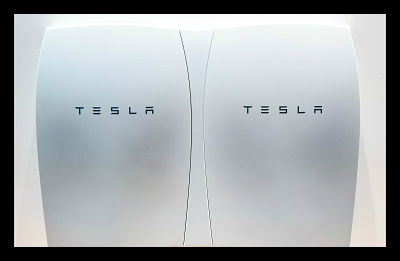Tesla’s New Home Battery: The Powerwall

As we burn up some of our nonrenewable resources, we face a grim ultimatum: continue using the same resources until we’ve depleted them all (which could have catastrophic consequences) or find a way that everyone on Earth can benefit from electricity without burning our nonrenewable resources. Elon Musk, the CEO of Tesla Motors, is trying to find a way to solve this and he has recently created a battery that may do just that.
Powerwall is a home battery that uses solar power in order to provide the battery with a charge. The battery is capable of powering an entire house when utilities are low. When a storm comes rolling into town and knocks the power out, the Powerwall is capable of providing the emergency power.
The compact design of the battery allows you to mount it on any wall that is desired; it is also an aesthetically pleasing piece of equipment. The entire system that collects and distributes electricity through the Powerwall is relatively simple. There are three essential parts:the Solar Panel, the Home Battery (Powerwall) and the Inverter.
The solar panel, which is installed on the roof, collects and converts sunlight into electricity. That surplus electricity is stored in the Powerwall during the day or even when the rates of the utility grid are low. The Inverter converts the electricity from DC to AC. AC is the type of electricity used for household electronics.
Building an invention as groundbreaking as this has many benefits. The battery can provide financial savings to its owner by charging during low rate periods when demand for electricity is lower, and, conversely, discharging when the rates are high. Owning a Powerwall also increases the consumption of solar power generation, which is one of the cleanest, renewable energy sources around. This allows for reduced CO2 emissions.
As this technology progresses, it can be used to address poverty and help provide electricity to areas that aren’t near power plants. Once there is a way to produce these types of rechargeable lithium-ion batteries cheaply, then we will be able to see them popping up in developing, remote areas, such as sub-Saharan Africa. The U.S. Congress has made bringing electricity to remote areas in Africa a major goal. The U.S. Agency for International Development is headlining that mission under the Electrify Africa Act.
The Powerwall is considered the automobile of its industry; it is pioneering technology. Once there are even better ways to produce the Powerwall, the technology will become more accessible. Once more accessible, more people will be able to utilize renewable energy. This is the underlying purpose of this technology; to reduce the amount of nonrenewable energy used by burning fossil fuels by providing a renewable alternative.
– Erik Nelson
Sources: Congress, Tesla Motors 1, Tesla Motors 2
Photo: Wired
